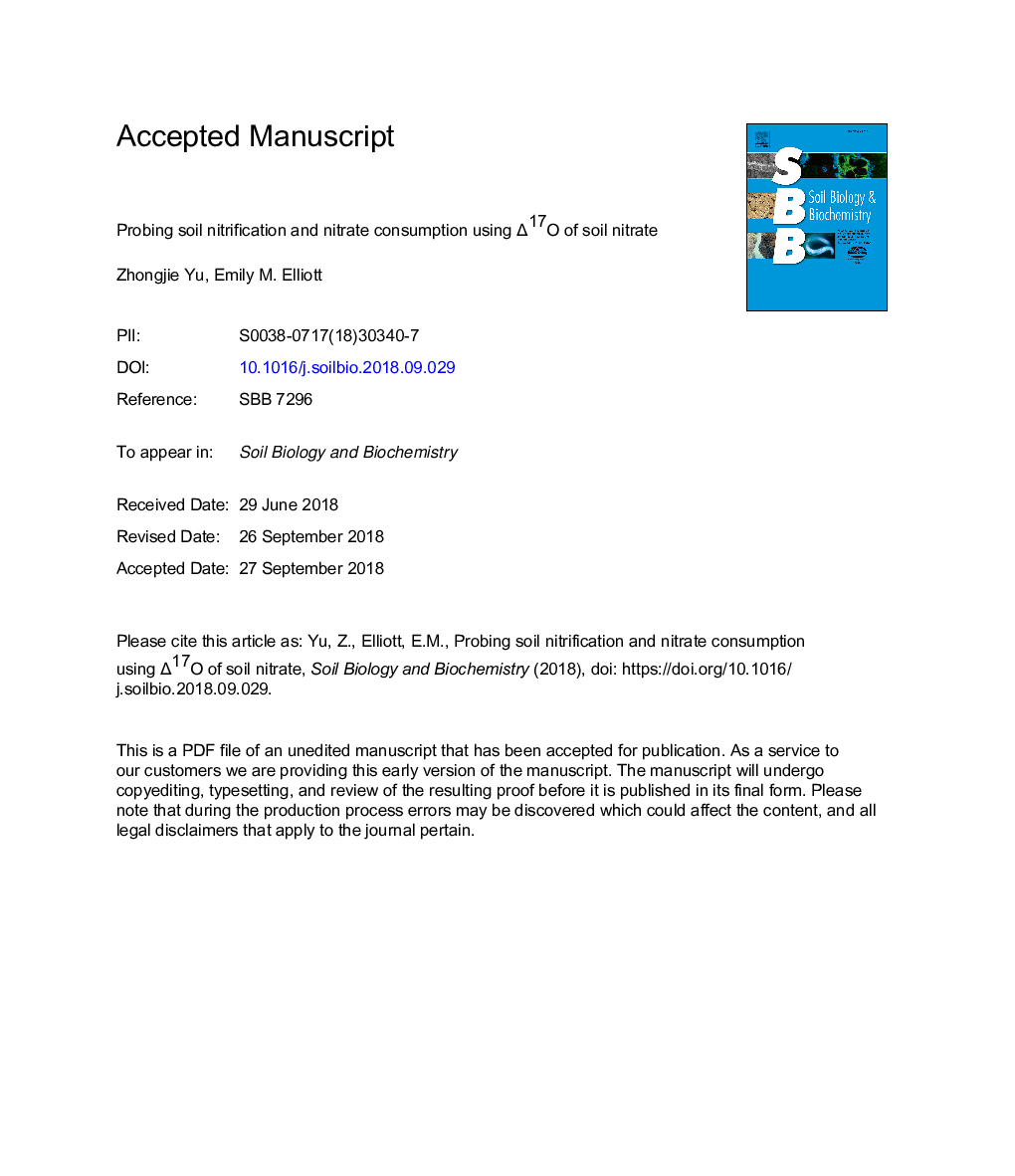| Article ID | Journal | Published Year | Pages | File Type |
|---|---|---|---|---|
| 11026002 | Soil Biology and Biochemistry | 2018 | 61 Pages |
Abstract
Recent analytical and conceptual advances related to the nitrate (NO3â) 17O anomaly (Î17O) have opened the door to a new method that probes soil nitrification and NO3â consumption using Î17O of soil NO3â. Because biological NO3â production and consumption processes in soil obey the mass-dependent fractionation law, Î17O of soil NO3â, an index of excess 17O over that expected from 18O, can be used to trace gross nitrification and NO3â consumption in a way analogous to the 15NO3â tracer typically employed in studies of soil NO3â cycling. Moreover, coupling Î17O with the dual NO3â isotopes (δ15N and δ18O) at natural abundances offers additional valuable insights into mechanisms that underlie soil NO3â dynamics. In this study, we conducted both laboratory and field experiments to assess the use of Î17O-NO3- for tracing soil nitrification and NO3â consumption. Soil samples spanning a wide range of physical and chemical properties were sampled from four sites for batch incubations and amendments with a Î17O-enriched NO3â fertilizer. After amendments, the triple isotopes (δ15N, δ18O, and Î17O) of soil NO3â were measured periodically and used in a developed Î17O-based numerical model to simultaneously derive gross rates and isotope effects of soil nitrification and NO3â consumption. The measured Î17O-NO3- was also used in the classical isotope dilution model to estimate gross NO3â turnover rates. In situ field soil sampling was conducted in a temperate upland meadow following snowmelt input of Î17O-enriched atmospheric NO3â to assess the robustness of Î17O-NO3- as a natural tracer. The results show that the temporal dynamics of Î17O-NO3- can provide quantitative information on soil nitrification and NO3â consumption. In the laboratory incubations, a wide range of gross nitrification and NO3â consumption rates were estimated for the four soils using the Î17O-based models. The estimated rates are well within the range reported in previous 15N tracer-based studies and not sensitive to oxygen isotopic fractionations during nitrification and NO3â consumption. Coupling Î17O-NO3- with the dual NO3â isotopes using the numerical model placed strong constraints on the δ15N and δ18O endmembers of nitrification-produced NO3â and revealed soil-specific N isotope effects for nitrification and NO3â consumption, consistent with the inferred differences in soil microbial community structure among these soils. Non-zero Î17O-NO3- values, up to 4.7â°, were measured in the meadow soil following the snowmelt event. Although soil heterogeneity in the field prevents quantitative rate estimation using Î17O-NO3-, active NO3â cycling via co-occurring nitrification and denitrification was revealed by the covariations in the triple NO3â isotopes. Integrating the field observations with the incubation results uncovered isotopic overprinting of nitrification on denitrification in the surface soil following the snowmelt, which has important implications for explaining the discrepancies between field- and laboratory-derived isotope systematics of denitrification. We conclude that Î17O-NO3- is a conservative and powerful tracer of soil nitrification and NO3â consumption and future applications are expected to help disentangle soil NO3â cycling complexity at various scales.
Keywords
Related Topics
Life Sciences
Agricultural and Biological Sciences
Soil Science
Authors
Zhongjie Yu, Emily M. Elliott,
